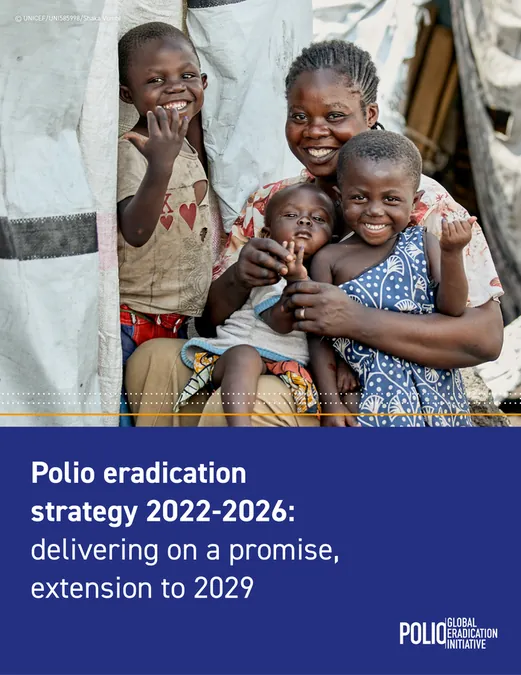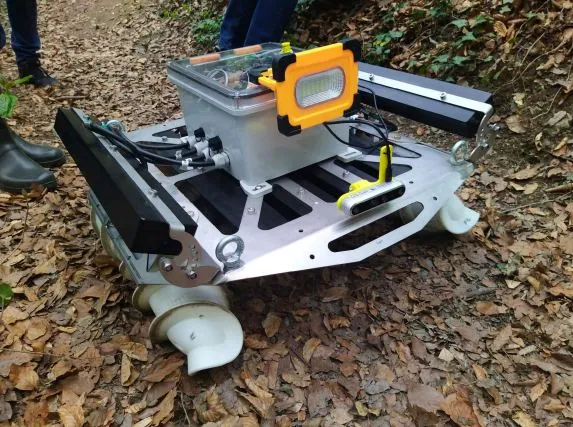
The Battle Against Polio: A Renewed Commitment to Eradication by 2029
2024-11-15
Author: Rajesh
Summary
After decades of relentless effort and groundbreaking advancements in vaccination, the fight against polio enters a pivotal phase with the Global Polio Eradication Initiative (GPEI) extending its timeline for complete eradication to 2029. While the progress has been monumental—91% reduction in polio cases since the inception of GPEI in 1988—challenges remain formidable, particularly in regions afflicted by conflict, humanitarian crises, and healthcare access issues.
The Current Landscape
Despite the introduction of vaccines that have successfully immunized over 3 billion children worldwide and prevented paralysis for 20 million people, wild poliovirus continues to pose a serious threat, especially in Afghanistan, Pakistan, Somalia, Yemen, and parts of Nigeria. These regions, characterized by insecurity and under-served communities, complicate vaccination efforts and the overall mission to eradicate the disease.
Strategic Adjustments for Success
To effectively combat polio, the GPEI plans to enhance its approach with innovative tactics and renewed strategies. Key initiatives will include intensified cross-border cooperation to reach mobile populations, implementing comprehensive health interventions, and improving community engagement to foster support for vaccinations. One notable tactic involves targeted communication strategies to combat vaccine hesitancy and rally community ownership of polio eradication efforts.
Furthermore, the initiative has identified four key areas at high risk for polio transmission: eastern Democratic Republic of the Congo, northern Nigeria, south-central Somalia, and northern Yemen. Swift action will be taken in these areas to ensure rapid vaccination campaigns utilizing new oral polio vaccines.
Investment and Partnerships: A Call to Action
As polio vaccinations resume in countries that had long been declared free from the virus, there’s a pressing need for continued investment and support. Ernst & Young estimates that polio eradication could save over $33 billion in healthcare costs by eliminating the need for continuous management of outbreaks. The economic implication of paralysis extends beyond healthcare; families face significant hardships in education and employment due to the condition.
Today, with approximately $4.5 billion already committed to the GPEI's updated strategy, there is an urgent appeal for the remaining $2.4 billion to ensure the campaign's success until 2029. The mounting challenges of misinformation, reluctance to vaccinate, and political instability necessitate a strong, unified global response.
Conclusion: A Global Responsibility
Investing in polio eradication means investing in broader health initiatives. The GPEI not only fights against polio but also serves as a crucial pillar for disease surveillance and response in global health emergencies—such as past outbreaks of measles, Ebola, and the recent COVID-19 pandemic.
The world is at a critical juncture; failing to maintain and improve vaccination rates against polio could lead to devastating consequences with outbreaks emerging anew in previously affected regions. The call to action is clear: we must rally together now to fulfill the promise of a polio-free future for every child, safeguarding them from the scourge of this debilitating disease.


 Brasil (PT)
Brasil (PT)
 Canada (EN)
Canada (EN)
 Chile (ES)
Chile (ES)
 España (ES)
España (ES)
 France (FR)
France (FR)
 Hong Kong (EN)
Hong Kong (EN)
 Italia (IT)
Italia (IT)
 日本 (JA)
日本 (JA)
 Magyarország (HU)
Magyarország (HU)
 Norge (NO)
Norge (NO)
 Polska (PL)
Polska (PL)
 Schweiz (DE)
Schweiz (DE)
 Singapore (EN)
Singapore (EN)
 Sverige (SV)
Sverige (SV)
 Suomi (FI)
Suomi (FI)
 Türkiye (TR)
Türkiye (TR)